Table of Contents
Flat 25% off on Home Interiors
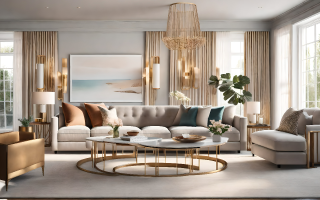
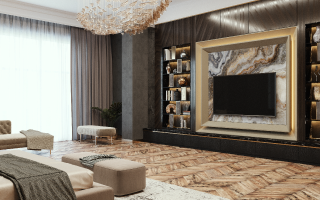
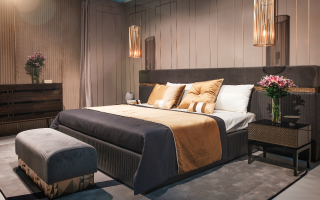
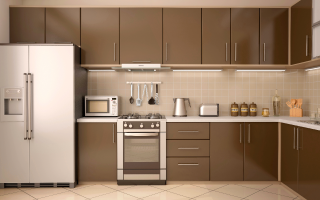
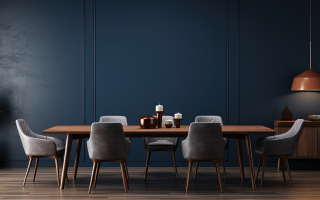
Loved what you read? Share it with others!
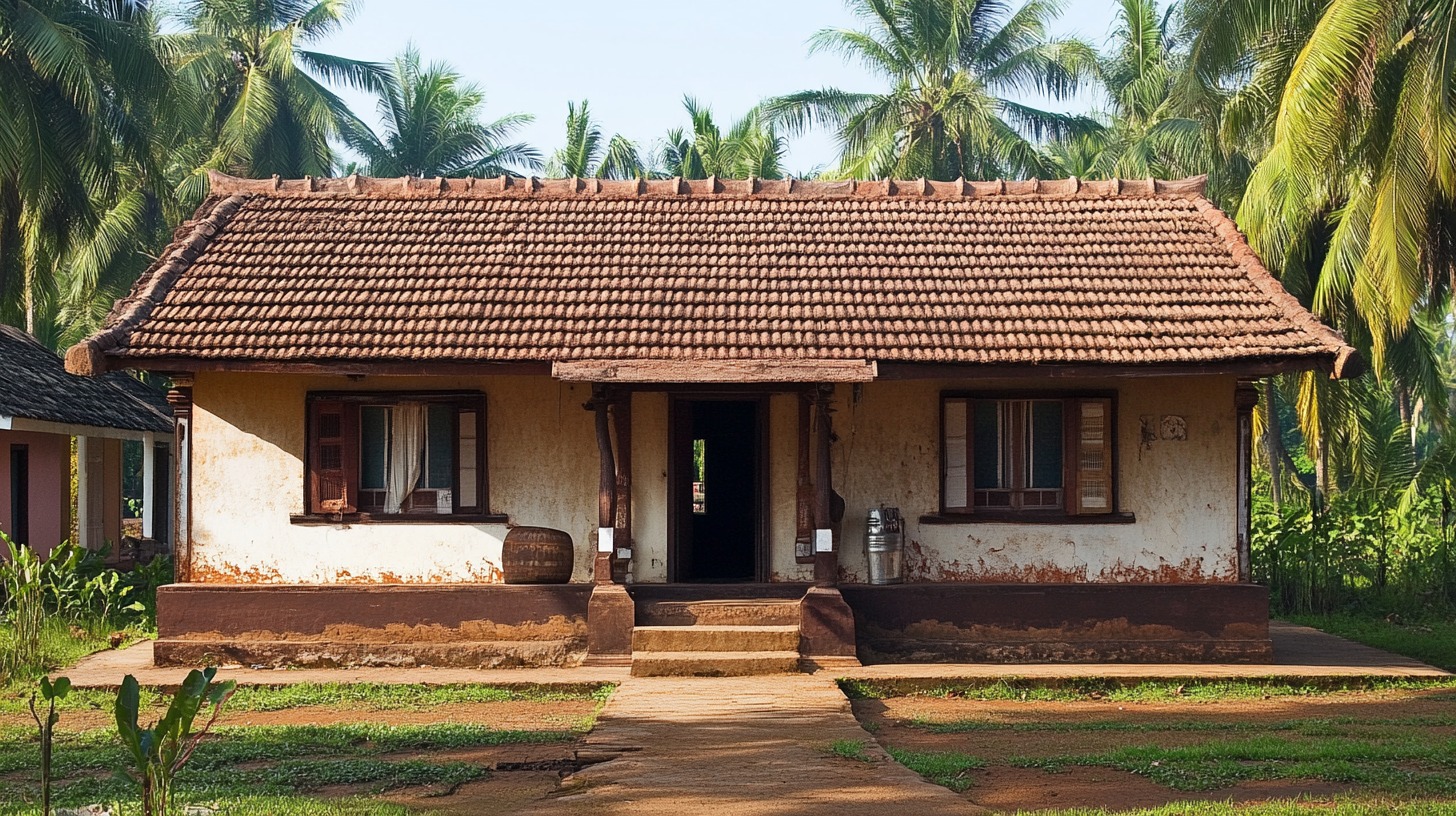

Submit the Form to Unlock the Best Deals Today
Help us assist you better
Check Your Eligibility Instantly

Experience The NoBrokerHood Difference!
Set up a demo for the entire community
South Indian Village House Design: Top 15 Trending of 2024
Table of Contents
South Indian village homes are a reflection of tradition. These South Indian village house design ideas, often inherited over generations, represent South India's rich legacy and continue to motivate modern architects and homeowners looking for sustainable and attractive residences.
Recommended Reading

Best Modern Cement Pop Designs for Your Home
December 31, 2024
5735+ views
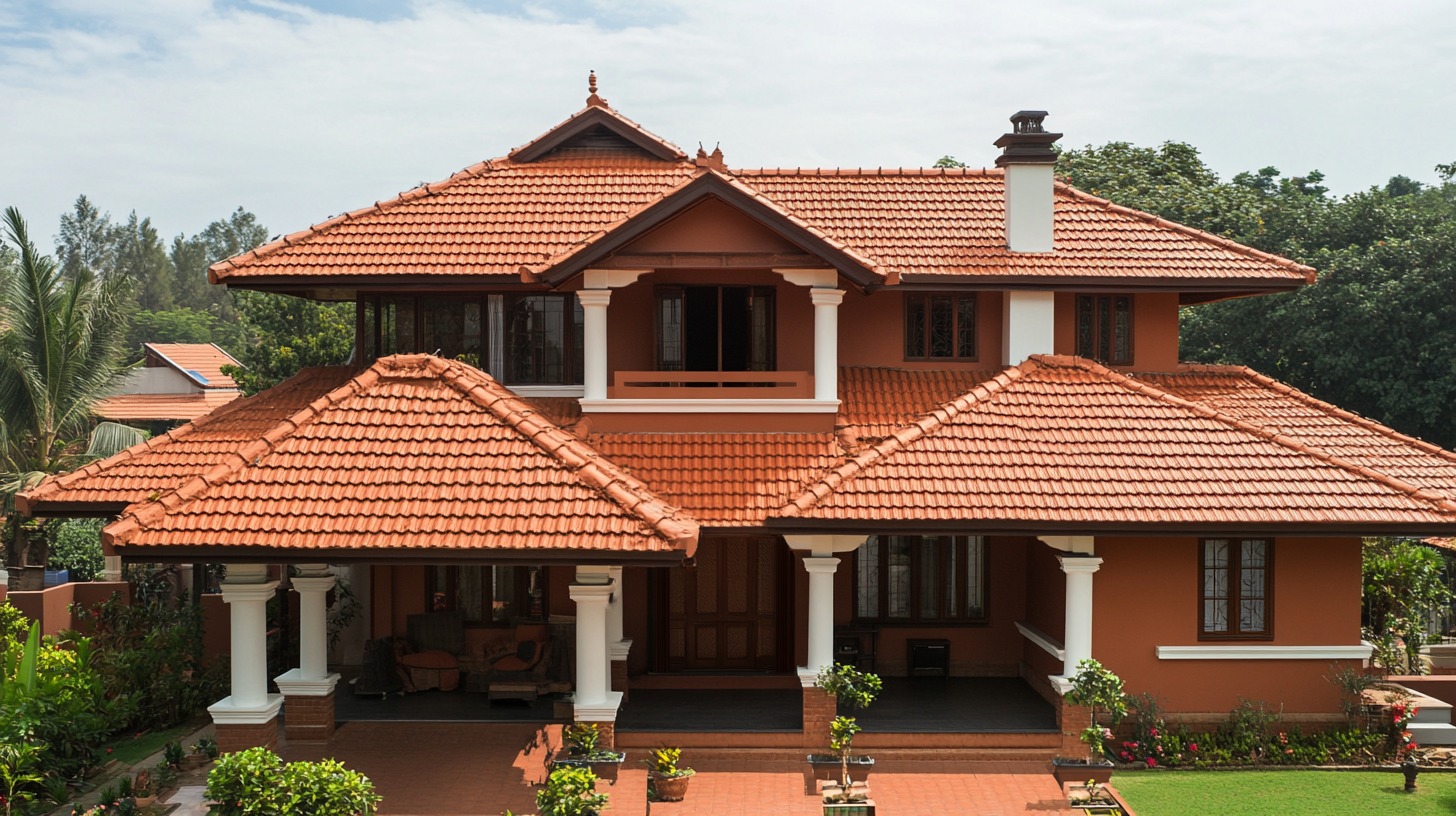
Perfect Roof Sheet Designs for Every Home! Choose Your Favourite!
December 31, 2024
9129+ views
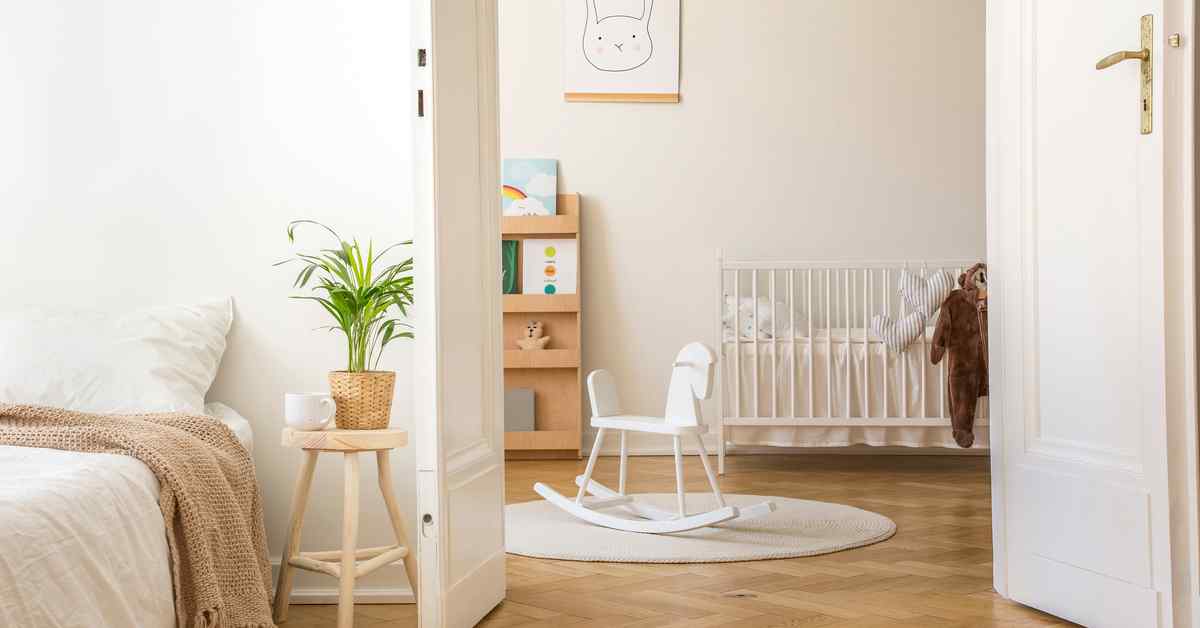
Opening Doors to Style: Modern Bedroom Door Design Concepts
December 31, 2024
4972+ views
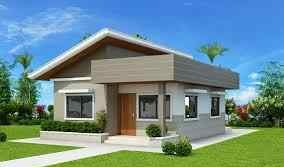
How To Calculate Square Feet Of A House And Why Does It Matter: A Beginner's Guide
December 30, 2024
7646+ views
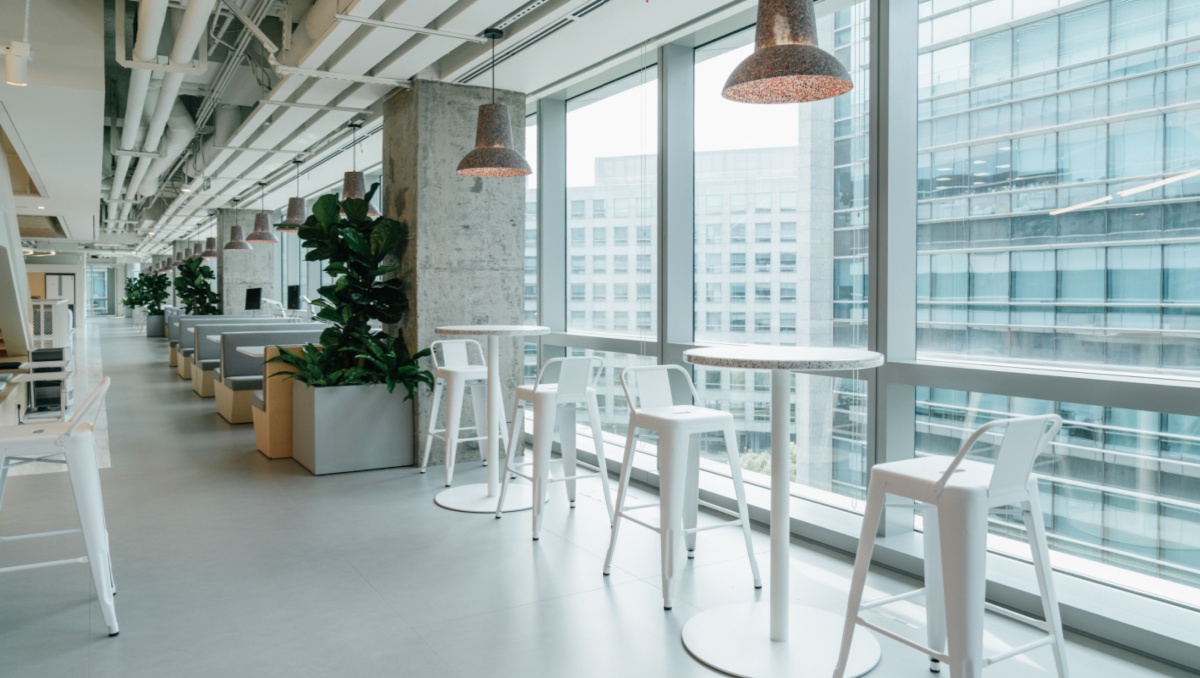
27 Best Office Interior Designs for a Modern, Professional Workspaces in 2025
December 27, 2024
2826+ views

But the question arises: What are these South Indian village house designs? Do not worry; this article is here to help. This article will explore old South Indian village home design ideas and some tips to help you choose the best design per your needs. So, let's get started.
Top 15 South Indian Village House Designs
South Indian village house designs often blend traditional architectural elements with modern amenities, creating homes that are both charming and functional. Below are 15 popular design features found in these houses:
Flat 25% off on Home Interiors





1. Thinnai or Verandah
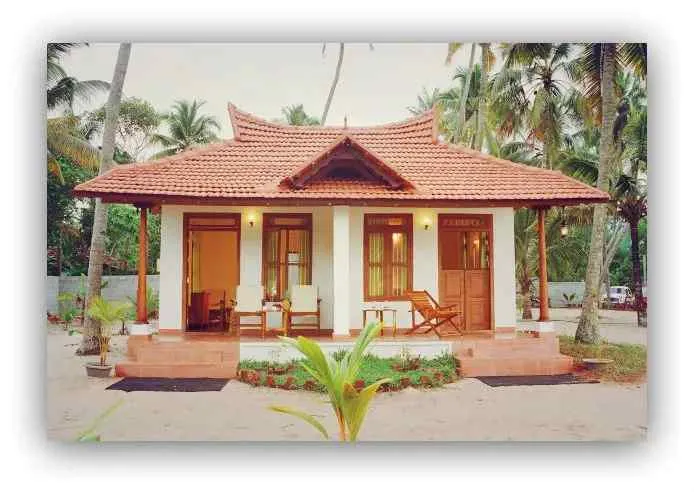
The thinnai, a verandah, is integral to traditional South Indian village house design. It is typically located at the house's entrance, providing a welcoming space for guests and passers-by. The thinnai is usually elevated from the ground level and is furnished with simple seating arrangements, often a wooden cot or stone bench. This semi-outdoor space is a place for relaxation and a communal area where people gather for conversations, making it a hub of social interactions.
In the hot and humid climate of South India, the thinnai plays a crucial role in maintaining the house's thermal comfort. Its open design allows for natural ventilation, helping to cool the interiors. The overhanging roof of the thinnai provides shade, protecting the house from the harsh sun while keeping the rain out during the monsoon season. Thus, the thinnai perfectly blends functionality, comfort, and aesthetic appeal.
2. Courtyard

Courtyards are another common feature in South Indian homes. They are usually centrally located, forming the heart of the house. The courtyard is an open space surrounded by rooms on all sides, providing a private outdoor area for the family. It serves multiple purposes - a natural light source for the surrounding rooms, a space for domestic activities like drying clothes or grains, and a place for children to play.
The courtyard also plays a significant role in the passive cooling of the house. The open design allows hot air to rise and escape, promoting air circulation and reducing the indoor temperature. In addition, the courtyard often has a Tulsa plant or a small temple, adding a spiritual dimension to the space. It is expected to see family members gathering in the courtyard for morning prayers or festive rituals, making it a space of cultural and religious significance.
Overall, the thinnai and the courtyard are quintessential elements of South Indian homes, reflecting the region's climate, lifestyle, and cultural practices. They are more than just architectural features - they are spaces that foster community, spirituality, and a deep connection with nature.
3. Mangalore Tiled Roof
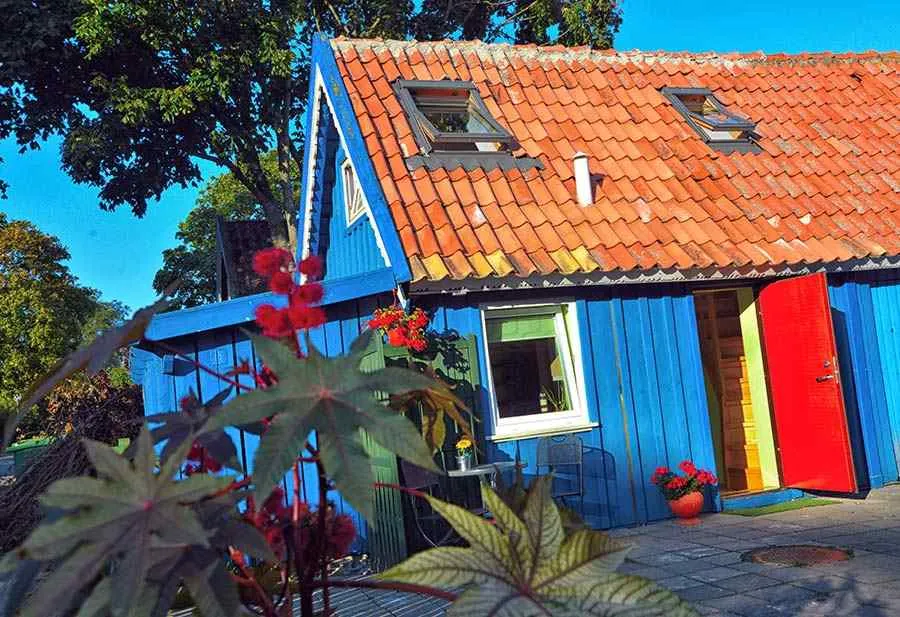
Mangalore tiled roofs, named after the coastal city of Mangalore in India, are a distinctive feature of South Indian architecture. These tiles are made from hard-baked clay, known for their durability and longevity. The tiles are typically red or brown, adding a vibrant touch to the house's exterior. The unique interlocking design of the tiles ensures a tight fit, offering excellent protection from the tropical weather conditions of South India, including heavy monsoon rains.
The Mangalore tiles provide a robust shield against the elements and contribute to the house's thermal comfort. The clay tiles have natural insulating properties, helping keep the interiors cool during hot summer. The high-pitched design of the Mangalore tiled roof facilitates the quick run-off of rainwater, preventing water stagnation and leakage. Thus, these tiles are aesthetically pleasing but also practical and eco-friendly.
4. Wooden Pillars
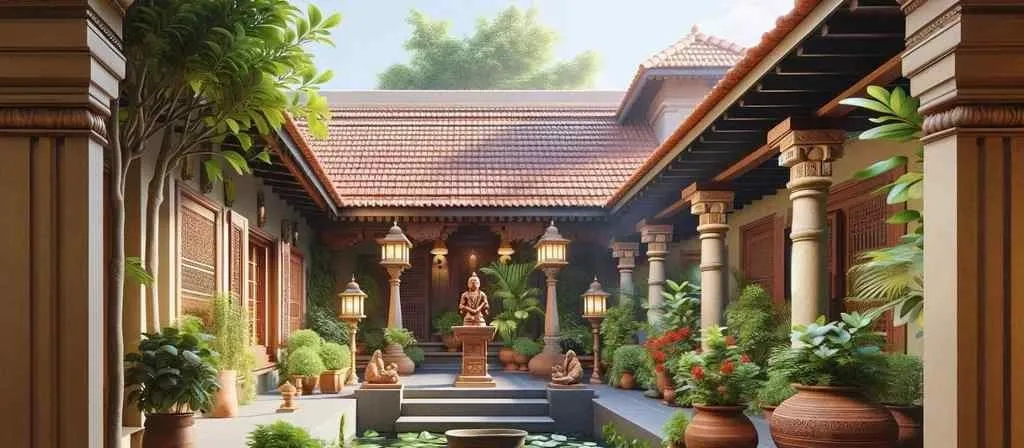
Wooden pillars are common in traditional South Indian homes, adding a rustic charm to the architecture. These pillars, often intricately carved, support the house's structure while enhancing its aesthetic appeal. The wood used for these pillars is usually teak or rosewood, known for their strength and resistance to termites.
The wooden pillars serve a dual purpose - structural and decorative. They bear the roof load, ensuring the house's stability. At the same time, the pillars are often adorned with traditional motifs and designs, reflecting the rich cultural heritage of South India. In many homes, the pillars are the centrepiece of the main living area, around which the other spaces are organised. They are a testament to the craftsmanship and architectural brilliance of the region, standing tall as symbols of its timeless traditions.
5. Brick Walls
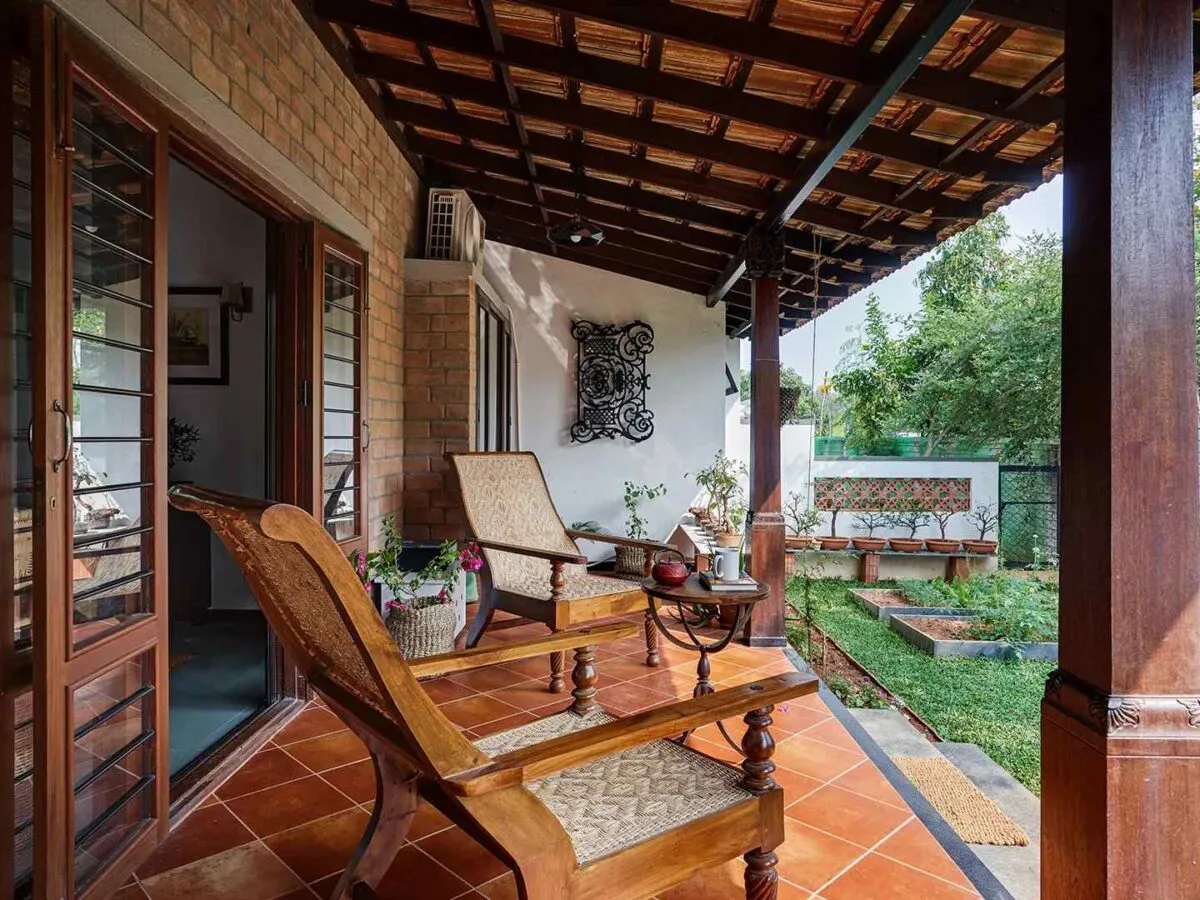
Brick walls are a staple in the construction of South Indian village houses. They are made from locally sourced clay, moulded and baked to create sturdy bricks. These bricks are then arranged in an interlocking pattern and mixed with sand and cement, forming the house's walls. The reddish-brown colour of the bricks lends a warm, earthy aesthetic to the house, blending seamlessly with the natural surroundings.
The brick walls offer several advantages. They are highly durable and capable of withstanding harsh weather conditions and the test of time. The thickness of the brick walls provides excellent thermal insulation, keeping the interiors cool during the hot summer months and warm during the winter.
The bricks also have good sound absorption properties, creating a quiet and peaceful indoor environment. Moreover, using locally available materials makes brick walls sustainable and cost-effective for house construction.
6. Teak Wood Doors
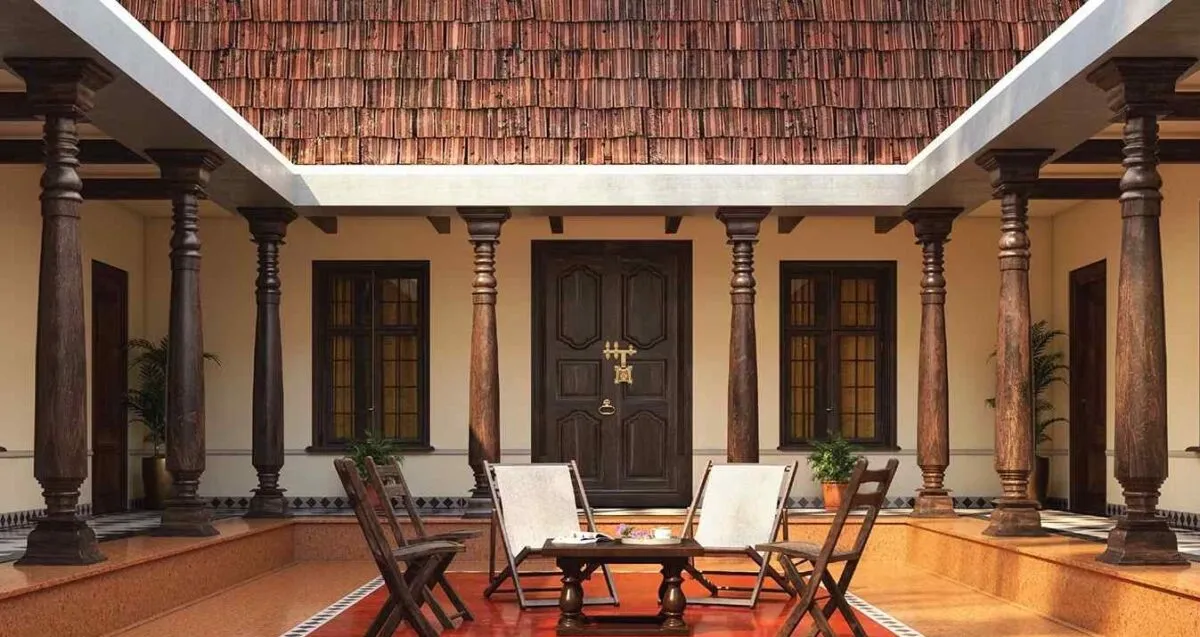
Teak wood doors are a common feature in South Indian village houses. Teak, known for its strength and durability, is resistant to termites and other wood-degrading organisms, making it an ideal door choice. The rich, golden-brown colour of teak adds a touch of elegance and sophistication to the house.
The doors are often handcrafted by skilled artisans, featuring intricate carvings or traditional motifs. These designs not only enhance the beauty of the doors but also reflect the cultural heritage of South India.
7. Jalli or Ventilation Blocks
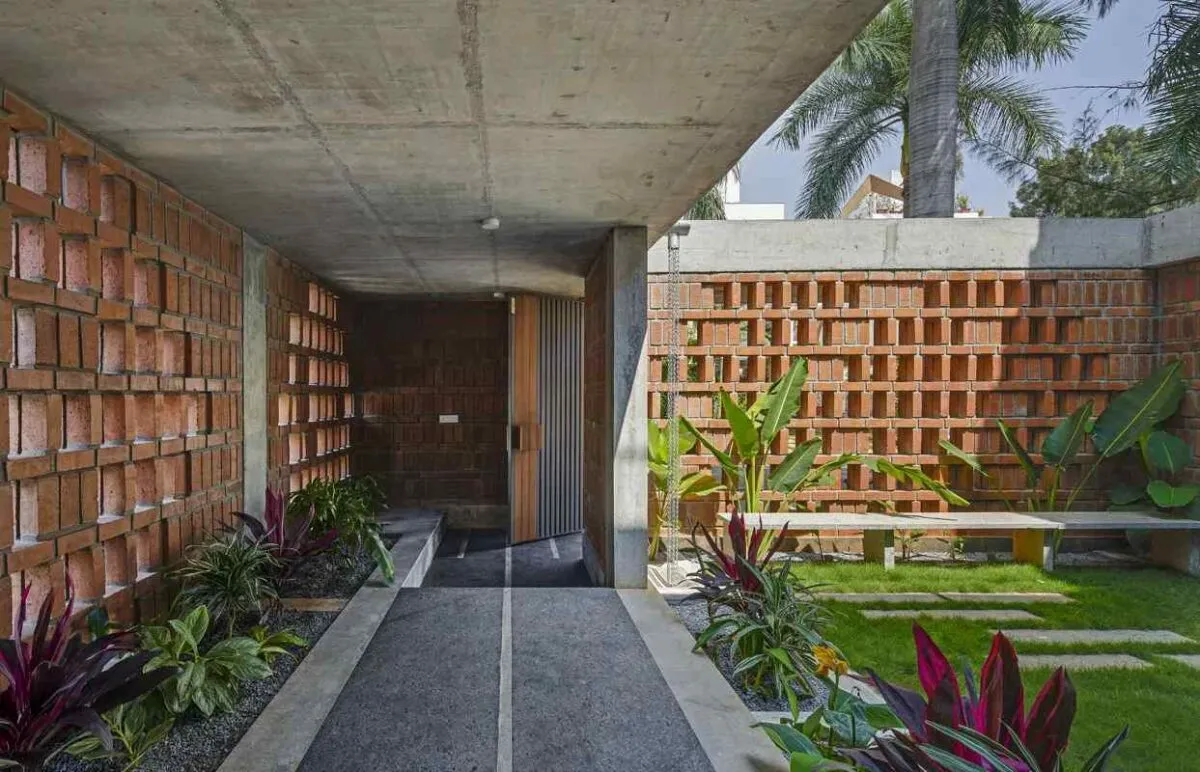
Jalli, or ventilation blocks, are a unique architectural feature in South Indian homes. These decorative screens, typically made of wood or stone, serve a dual purpose. They allow for air circulation, which is crucial in the hot and humid climate of South India, while also maintaining privacy and security. The jalli screens are often placed in windows or used as room dividers, allowing light and air to pass through while obstructing direct view.
The design of the jalli is not just functional but also artistic. The screens are often intricately carved with traditional motifs, adding an aesthetic appeal to the house. The patterns vary from geometric designs to floral motifs, each reflecting the craftsmanship and cultural heritage of the region. Thus, jalli screens are a perfect blend of form and function, enhancing the comfort and beauty of South Indian homes.
8. Cottage-Style Simple Village House Design
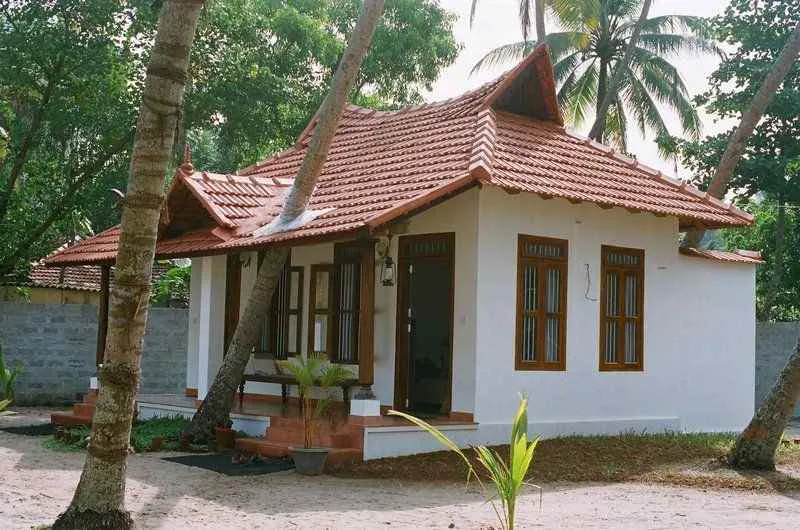
The cottage-style house design is recognised for its comfortable and welcoming look. The architecture usually includes a compact layout, which has a friendly front porch, steep roof slopes, and dormers. The inside of the house is designed to give off a warm feeling, focusing on comfort and simplicity.
These homes are often found in rural or semi-rural areas, providing a peaceful escape from the busy city life. The design can include a mix of natural materials like wood and stone, adding to the rustic appeal. In India, cottage-style homes are becoming a popular choice for vacation homes, especially for those looking to retire in a quiet countryside location.
The cottage-style design is not just about looks but also about creating a home that is practical and cosy. The layout of the house is designed to make the most of natural light and air circulation, ensuring a nice and healthy living environment.
9. Thatched Roof
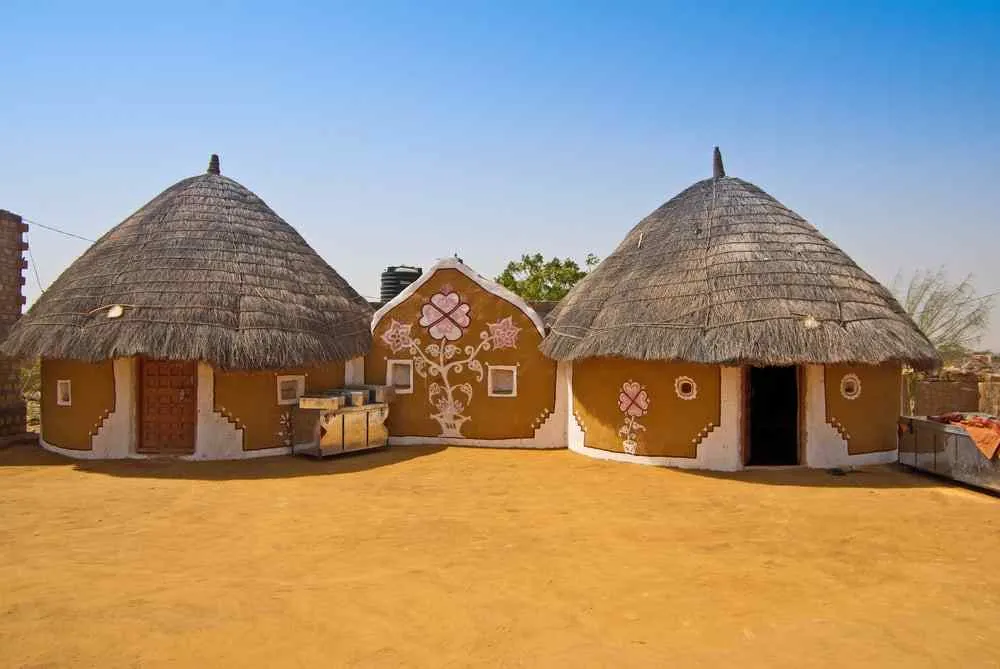
Thatched roofs are a traditional roofing option in South Indian villages, known for their rustic appeal and natural insulation properties. These roofs are made from dried plant stalks, typically straw, reed, or palm leaves, which are tightly woven to form a waterproof layer.
The thatched roof is a testament to the resourcefulness and ingenuity of the villagers, who use locally available materials to construct their homes. It provides excellent insulation, keeping the interiors cool during the hot summer months and warm during the winter.
The thickness and density of the thatch create a barrier against heat transfer, making it an energy-efficient roofing option. However, thatched roofs require regular maintenance to ensure their durability and longevity.
10. Terracotta Flooring
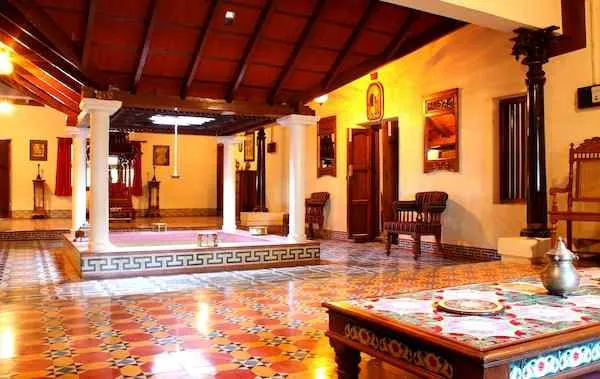
Terracotta tiles are a popular choice for flooring in South Indian village houses. Made from natural clay, these tiles are fired in a kiln and glazed to create a rigid, durable surface. The terracotta tiles are known for their warm, earthy look, which adds a cosy and welcoming feel to the house.
The reddish-brown colour of the tiles blends well with the natural surroundings, enhancing the aesthetic appellation to their aesthetic appeal; terracotta tiles offer several practical benefits. They are easy to maintain, requiring only regular sweeping and occasional mopping to keep them clean. The tiles are also naturally resistant to mould and bacteria, making them a hygienic choice for flooring.
Moreover, terracotta tiles have excellent thermal properties, helping to keep the interiors cool in summer and warm in winter. Thus, terracotta flooring is a perfect blend of beauty, durability, and practicality, making it a preferred choice for South Indian village houses.
11. Pooja Room
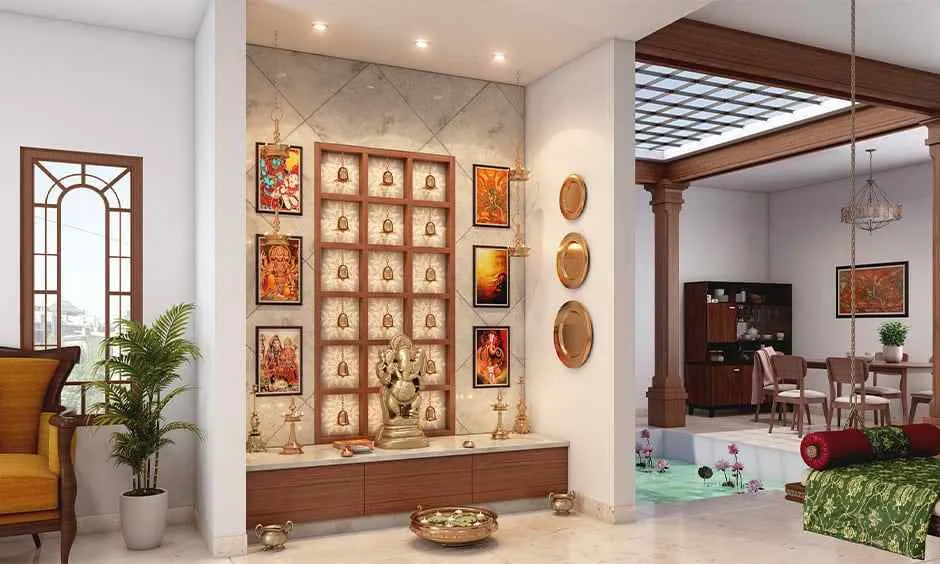
A Pooja, a prayer room, is a sacred space in Indian homes dedicated to prayer and worship. This room is typically adorned with religious symbols, idols, and pictures of deities, reflecting the spiritual beliefs of the household. The design and layout of the Pooja room can vary greatly depending on the family's religious practices and preferences.
The central element of a Pooja room is the altar, where the idols or images of gods are placed. This altar is often made of marble or wood and is meticulously cleaned and maintained. The room also has storage spaces for religious texts, incense sticks, lamps, and other ceremonial items. The lighting in the room is usually soft and warm, creating a serene atmosphere conducive to meditation and prayer.
The Pooja room is considered the house's purest and most promising area. It is often located in the northeast corner of the home, which is believed to attract positive energy according to Vastu Shastra, the traditional Indian architecture system. Regular rituals, prayers, and offerings are conducted in this room, making it a vital part of daily life for many Indian families.
12. Open Kitchen
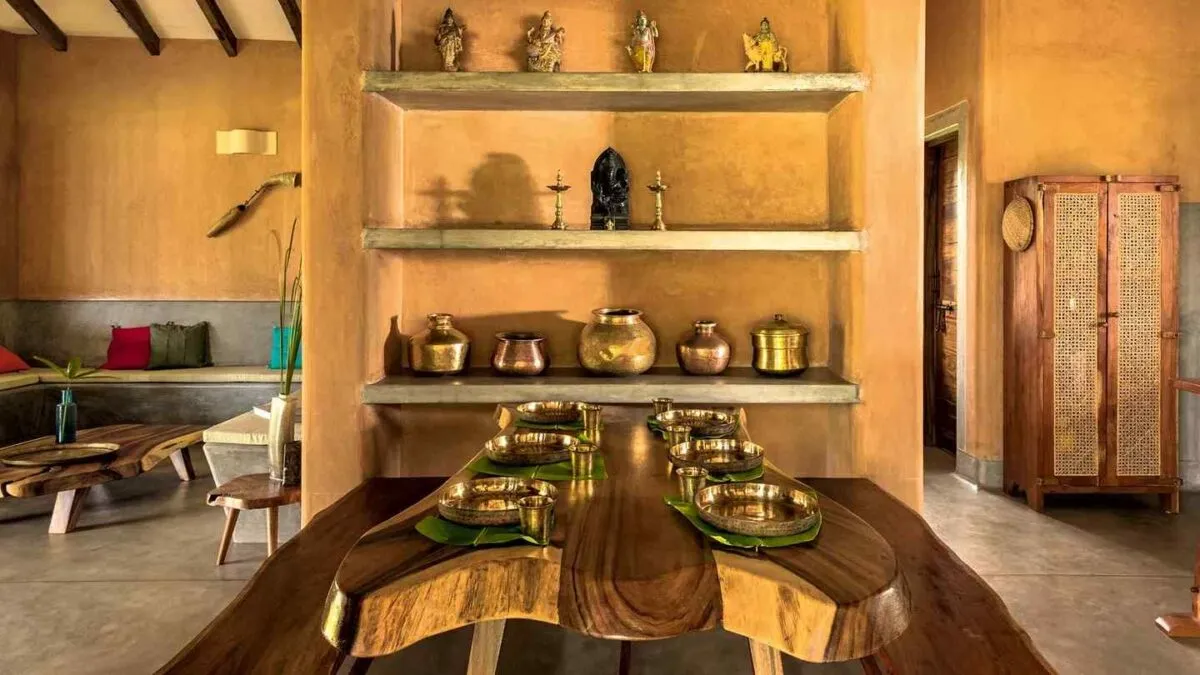
Open kitchens are a popular feature in South Indian village houses. Unlike closed kitchens, which are separated from the rest of the house by walls or doors, open kitchens are integrated into the living space. This design allows for interaction with family members while cooking. It promotes better ventilation, which is particularly beneficial in the warm climate of South India.
An open kitchen layout typically includes a cooking area with a stove or hearth, a prep area with a countertop for chopping and preparing ingredients, and storage areas for utensils, pots, pans, and food items. The absence of walls allows for easy movement between the kitchen and the dining or living area, fostering a sense of community and togetherness during meal preparation.
In addition to its practical benefits, the open kitchen also has cultural significance. It is a space where traditional recipes are passed down from generation to generation, and family and friends gather to share meals and create memories.
13. Courtyard Garden
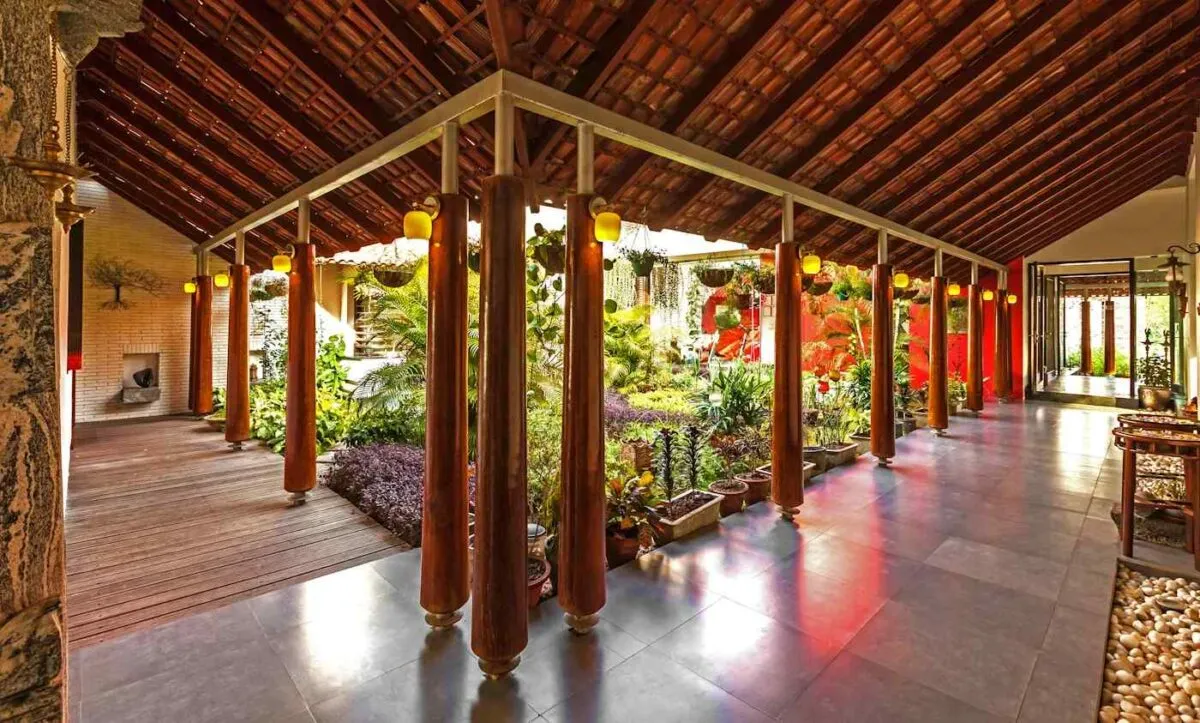
A courtyard garden is a charming feature often found in traditional Indian homes. It is a small green space or garden within the house, usually enclosed on all sides by walls. This design creates a private and serene outdoor area that can be enjoyed without leaving the comfort of the home.
The courtyard garden serves multiple purposes. It adds beauty and freshness to the living environment, acting as a natural focal point with its lush greenery and blooming flowers. It also provides a space for relaxation and contemplation, where family members can connect with nature, meditate, or enjoy tranquillity.
In addition to its aesthetic appeal, a courtyard garden has practical benefits. It improves ventilation and allows natural light to permeate the house, creating a bright, airy living space. The plants in the garden help to purify the air and provide shade, reducing the temperature inside the house.
14. Stone Cladding

Stone cladding is a decorative technique used in architecture to embellish the exterior walls of buildings. It involves applying thin slices of stone, or 'cladding', to the wall's surface, adding texture and visual interest. This technique is commonly used in South Indian village houses, enhancing their rustic charm and traditional aesthetic.
The stones used for cladding can vary in colour, size, and type, depending on the desired look and the local availability of materials. Common choices include granite, sandstone, and slate. The stones are carefully selected and arranged to create a visually pleasing pattern on the wall.
Aside from its aesthetic appeal, stone cladding provides an extra layer of protection to the building, shielding the underlying structure from weather damage. It also has excellent thermal properties, helping to keep the house's interior cool in the hot South Indian climate.
15. The Mud House
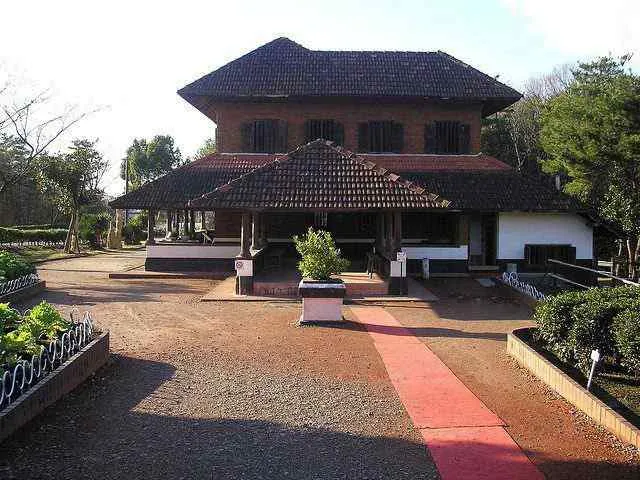
The Mud House, a traditional South Indian village house design, is a marvel of vernacular architecture that leverages local materials and age-old techniques. As the name suggests, the primary construction material is mud, often mixed with straw or other fibrous materials for added strength and stability.
This mixture, known as cob or adobe, is then shaped into bricks or directly applied to create walls. The result is a sturdy, durable structure that can withstand time. One of the most remarkable aspects of the mud house is its inherent thermal properties. The thick mud walls act as a natural insulator, absorbing heat during the day and releasing it at night.
This passive cooling and heating system keeps the interiors pleasantly cool in the scorching summer months and comfortably warm during the chilly winters. This energy-efficient design reduces the need for artificial heating and cooling and contributes to a lower carbon footprint.
What are the Factors to Consider When Choosing a South Indian Village House Design?
Choosing a South Indian village house design involves considering various factors to ensure that the final design meets your needs and preferences. some of the key factors to consider:
1. Vastu Shastra Compliance
Vastu Shastra is a traditional Indian system of architecture that provides guidelines on various aspects of house design, from the layout and measurements to ground preparation and spatial geometry. Many homeowners believe a house designed according to Vastu Shastra principles brings prosperity and happiness.
2. Budget and Maintenance
The cost of building and maintaining a house is a crucial factor to consider. Traditional designs can sometimes be more expensive due to the craftsmanship involved. Therefore, it's crucial to balance your budget with your design aspirations.
3. Future Expansion
Village houses often need to accommodate growing families. Therefore, the design should allow for future expansion or modification without too disrupting the existing structure.
4. Sustainability
Sustainable design is about minimising the house's environmental impact. This can be achieved by using recycled or sustainable materials, optimising natural light and ventilation design to reduce energy consumption, and incorporating green spaces for better air quality. Rainwater harvesting and solar power are other features that can make the house more sustainable.
5. Functionality
The house's design should cater to its occupants' specific needs. This involves considering the occupants' number, lifestyle, and space needs. For instance, a joint family might require more bedrooms and bathrooms. At the same time, a working professional might need a quiet home office space. Privacy needs, guest accommodation, and outdoor spaces are other factors that can influence the design.
Conclusion
South Indian village house design ideas offer a unique blend of tradition and simplicity deeply rooted in the region's rich culture. These homes are aesthetically pleasing and highly functional, making them an excellent choice for those seeking tranquillity and simplicity.
If you're inspired by these designs and considering owning or renting a home with such traditional charm, NoBroker provides a wide range of services to help you design your home. We can help you plan your space, choose materials, design furniture, and manage your project. We offer solutions for all rooms in your home, including the bedroom, living room, and kitchen.
We take the time to understand your needs and provide personalised design solutions. This ensures that your home is beautiful but also practical and comfortable. One of the best things about NoBroker is its transparency. We offer competitive prices, and there are no hidden costs. They also guarantee to finish your project on time. Plus, they offer a 10-year warranty for peace of mind.
To start your design journey with NoBroker, you can book a free consultation on their website or call them. Our team will guide you through the process and make it as easy as possible. So, if you’re considering designing a new home or updating your current one, consider NoBroker’s services.
NoBroker Interiors Design Testimonials
Most Viewed Articles
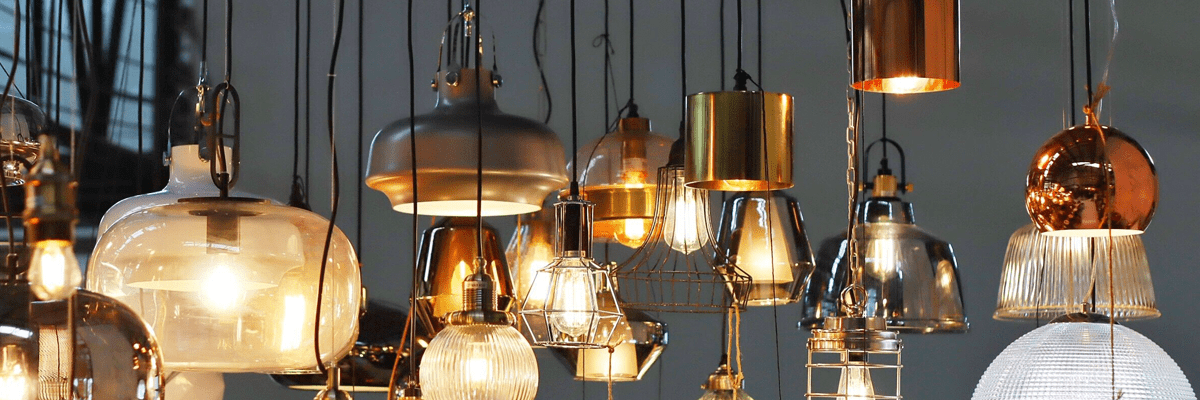
Top Hanging Light Ideas to Illuminate Your House
March 29, 2024
392775+ views

GFRG Panels - A New Technology in Building Construction
August 24, 2023
256627+ views
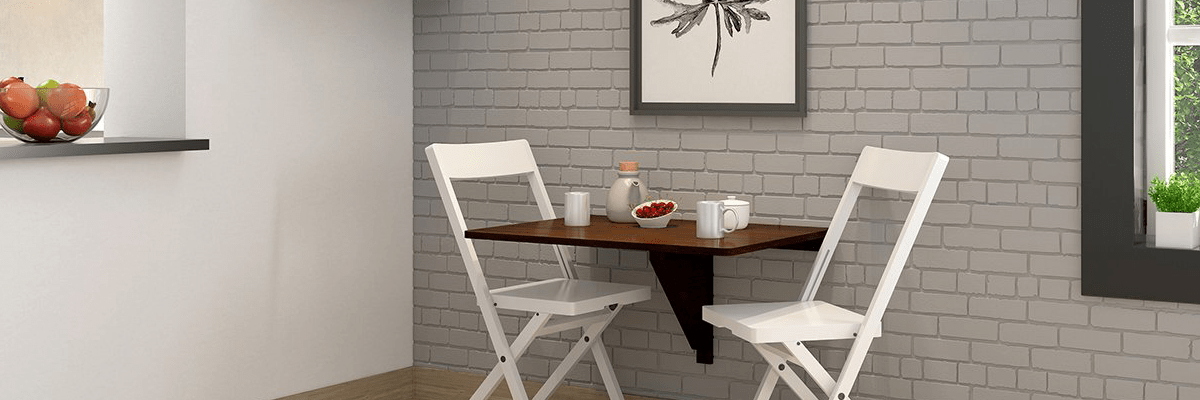
15 Wall-Mounted Dining Table Design Ideas
January 25, 2024
103144+ views

How Mivan Construction Technology Is Transforming the Art of Building!
December 17, 2024
50348+ views
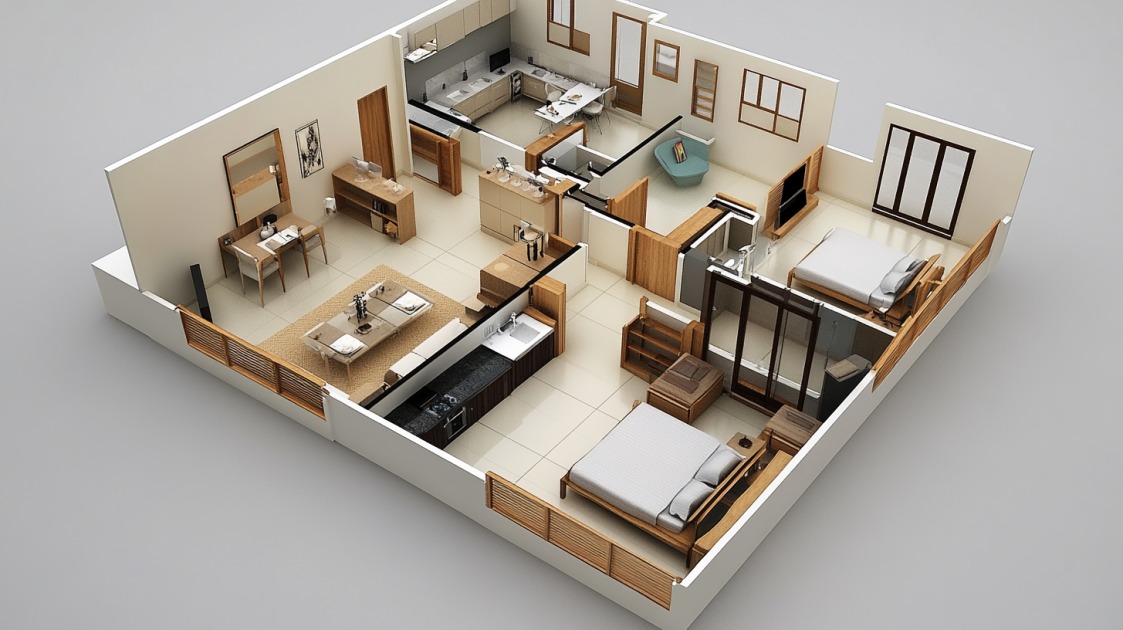
Best 3 Bedroom House Plan: Modern and Space-Efficient Layouts for 2025
December 17, 2024
29083+ views
Frequently Asked Questions
Ans: Yes, cross ventilation and large windows are crucial to keep the interior cool in hot climates.
Ans: The most common room layout of the South Indian village houses often features a central courtyard surrounded by living spaces, bedrooms, a kitchen, and a veranda, facilitating family interaction and natural ventilation.
Ans: Yes, you can use materials like bamboo, thatch, and locally sourced wood to promote sustainability.
Ans: Exteriors frequently showcase earthy tones like terracotta, and ochre, and bright accents in blue or green, reflecting the natural landscape and traditional aesthetic preferences.
Ans: You can incorporate high compound walls, strategically placed windows, and internal courtyards to ensure privacy while allowing for ventilation and natural light.
Loved what you read? Share it with others!
Recent blogs in
36 Modern Stair Railing Design Ideas for a Stylish Home in 2025
January 5, 2025 by Priyanka Saha
33 Bathroom Wall Tiles Design Ideas: Trendy Design Ideas in 2025
January 3, 2025 by Susan
51 Latest Wallpaper Designs for Bedroom: Transform Your Bedroom Walls in 2025
January 2, 2025 by Ananth



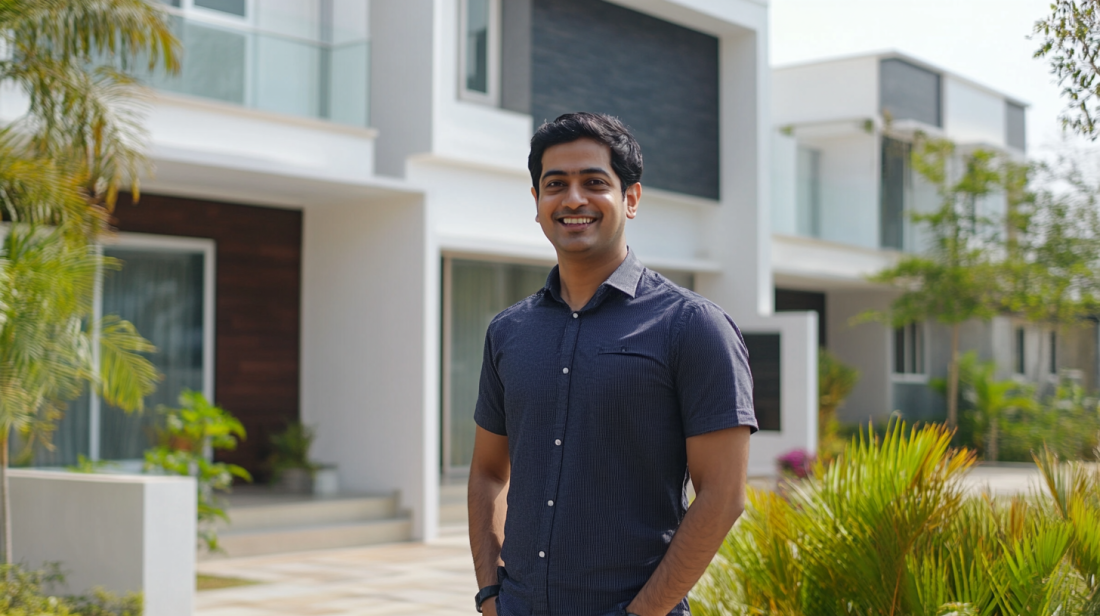
Join the conversation!